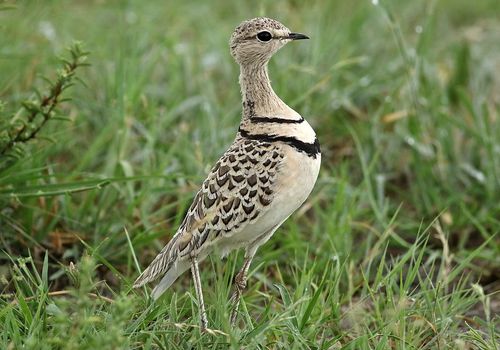
Double banded courser
Rhinoptilus africanusDouble banded courser
Introduction: Double-banded coursers (Rhinoptilus africanus) stand in shade of shrub in the heat of the day in open plains with short grasses, or around the ground between grass tufts around pans. Dry flat riverbeds and stony semi-desert are also favoured. As they are fast runners and reluctant fliers, this makes them difficult to observe.
Distribution: Locally common throughout most of Namibia, especially Etosha National Park, Swakopmund, Windhoek and the Caprivi.
Diet: Early morning and late afternoon foragers for ants and beetles, caught with a sudden thrust after a quick run.
Description: Short, arched bills and strongly patterned plumage.
Breeding: Only 1 rounded egg, slightly pointed at 1 end is laid on bare ground year-round. Nests become slightly hollowed during incubation and are ringed with small stones and plant matter. Antelope droppings are also used.
Size: 25cm.
Weight: 90g.


.png?width=82&height=85&name=Navigate%20Namibia-03%20(1).png)